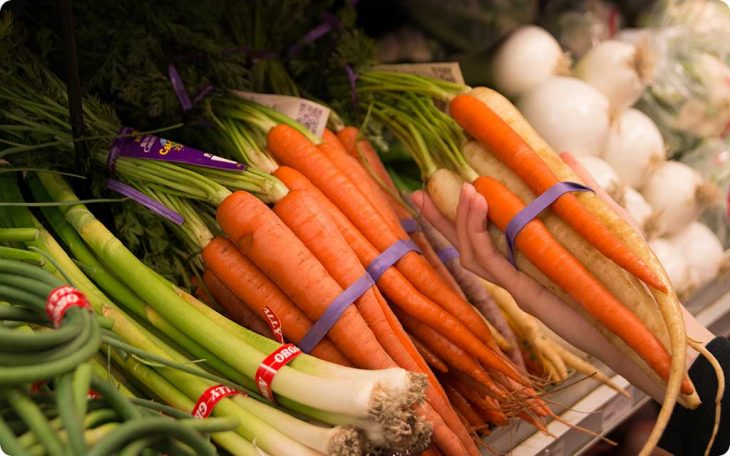Called “Organic Produce Premiums Under Pressure,” the six-page report was written by Roland Fumasi, senior analyst for fresh produce or Rabobank.
In a summary of the report the author highlighted several trends related to the organic fresh produce sector:
- U.S. retail organic food sales continue to climb, but the rate of increase has slowed;
- Organic shipping point prices have begun to decline as volumes have risen;
- Organic price premiums over conventional produce have weakened considerably for some commodities but have expanded for others;
- Shippers must balance retail demand and grower profitability by using caution in expanding output, particularly for some crops; and
- Long-term success in organic produce will require adaption to changing conditions.
The paper indicated growth in organic food sales has moderated.
“Between 2010 and 2016, retail organic food sales grew by an average 10% per year, however, that growth has slowed to 6% for the past two years,” the report said.
The slower growth rate has been accompanied by higher volume and softer prices of some organic commodities.
“There were some years when volumes were going up and prices were still rising,” Fumasi said in late August. “We’re not in that environment anymore.”
The reason for that, he said, is that devoted organic buyers are finding adequate to supply to meet their demand.
“For that percentage of the buyers out there that are strictly organic buyers, for a lot of these commodities, we’ve satisfied that demand,” he said. “We’ve filled that demand and we’ve got this additional supply that has to go into that more mainstream consumer market, where those consumers are much more price sensitive.”
Because most U.S. consumers are not strictly organic produce buyers, the industry is facing a demand curve that looks different than it used, he said.
“So now when we see big increases in supply, we’re going to see a much more rapid price change,” Fumasi said.
Continued growth in organic volumes has now begun to weigh negatively on shipping point prices, according to the report. For the period of 2016-2018, shipping point prices during the 2016-2018 declined for seven of the eight organic produce commodities tracked.
Between 2013 and 2015, retail prices rose by unweighted average of 1.3% per year for the top seven organic items but dropped by annual average of 0.4% in 2016-2018.
With bigger price reactions with oversupply, Fumasi said that grower-shippers will have to be careful about expanding organic output too rapidly.
On the bright side, Fumasi said that younger millennial consumers will continue to be a positive driver of organic demand.
“So (growing demand from younger consumers) keeps the ball rolling, and I think retailers are (also) a big driver of this demand — they want to promote more organic produce, but at the same time, they are having to soften prices to move it all.”
Fumasi said he has heard growers in the apple and strawberry space express uneasiness about the falling premium for organic supply compared with several years ago because of rising supply. “It is something that everybody’s thinking about,” he said.
However, Fumasi said there are still opportunities to get very significant price premiums, depending on commodity and time of the year. For example, while the average shipping point premium for organic blueberries was 45% in 2018, the report said there were nine weeks when the premium was above 90% and three weeks with a premium above 100%.
Getting the premium
As a rule of thumb, the Rabobank report said organic growers need a minimum of 40% premium over conventional to make organic production worthwhile.
“Without an adequate premium to offset increased risk/cost, producers will find it challenging justify organic production,” the report said. Retailers are asking more organic volume and lowering prices to move the added volume.
The report said that 50% of commodities evaluated showed clear reductions in organic premiums over the past few years.
Specifically, premiums for organic apples, blueberries, pears, strawberries and bell peppers have come under pressure, according to the report. On the other hand, the Rabobank study found that organic premiums are holding up better for cantaloupe, table grapes, oranges, and grape tomatoes.
The paper grouped commodities in relative to their future growth prospects under “positive,” “neutral” and “caution.”
- Positive: artichokes, cabbage, cantaloupe, cauliflower, celery, grape tomatoes, honeydew, kale, oranges, spinach, sweet corn, sweet potatoes and table grapes;
- Neutral: broccoli, carrots, iceberg lettuce, lemons, red leaf lettuce, romaine lettuce;
- Caution: apples, bell peppers, blackberries, blueberries, green leaf lettuce, peas, strawberries.
Growers must seek out improvements in production technology to lower costs for organic, according to the report.
“Figuring out how to produce organically, at a unit cost that is similar to conventional production, is the evasive, but long-run goal,” the report said.



